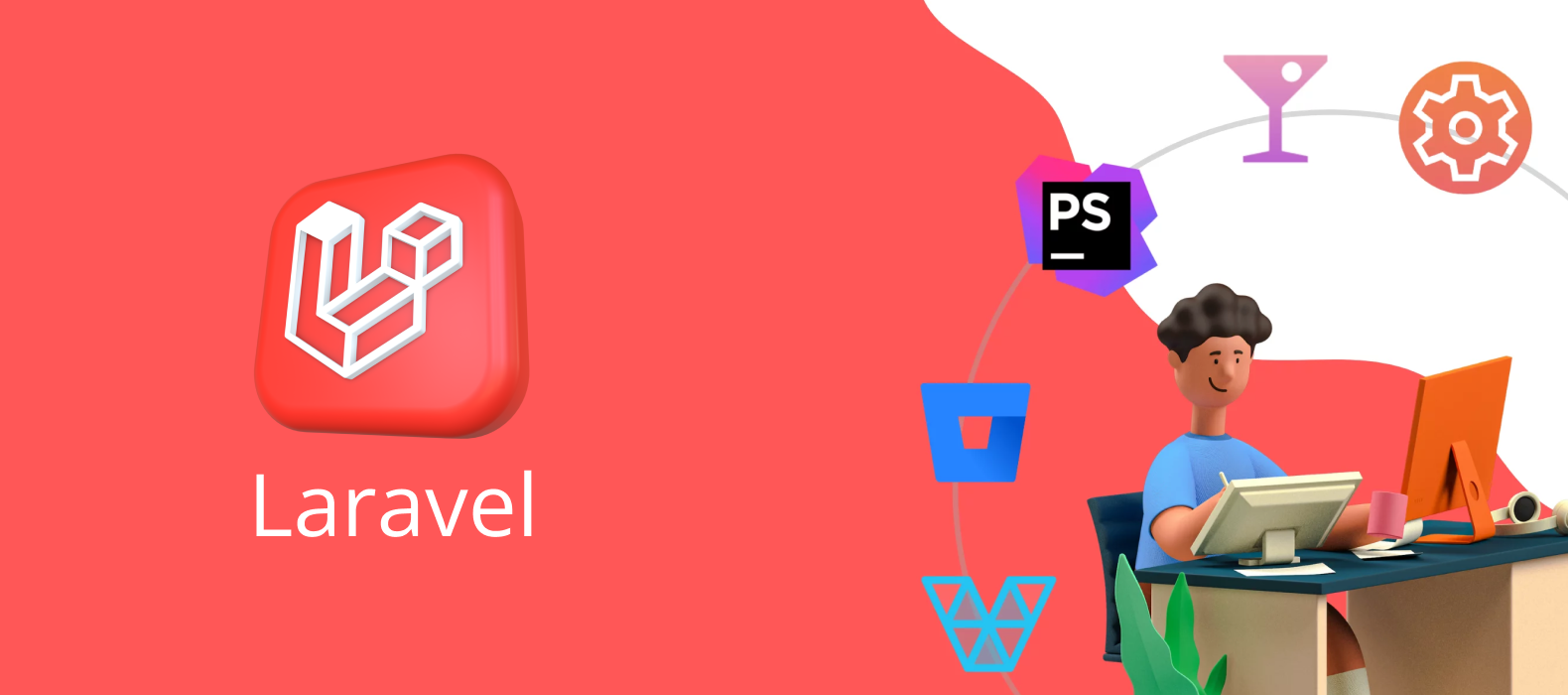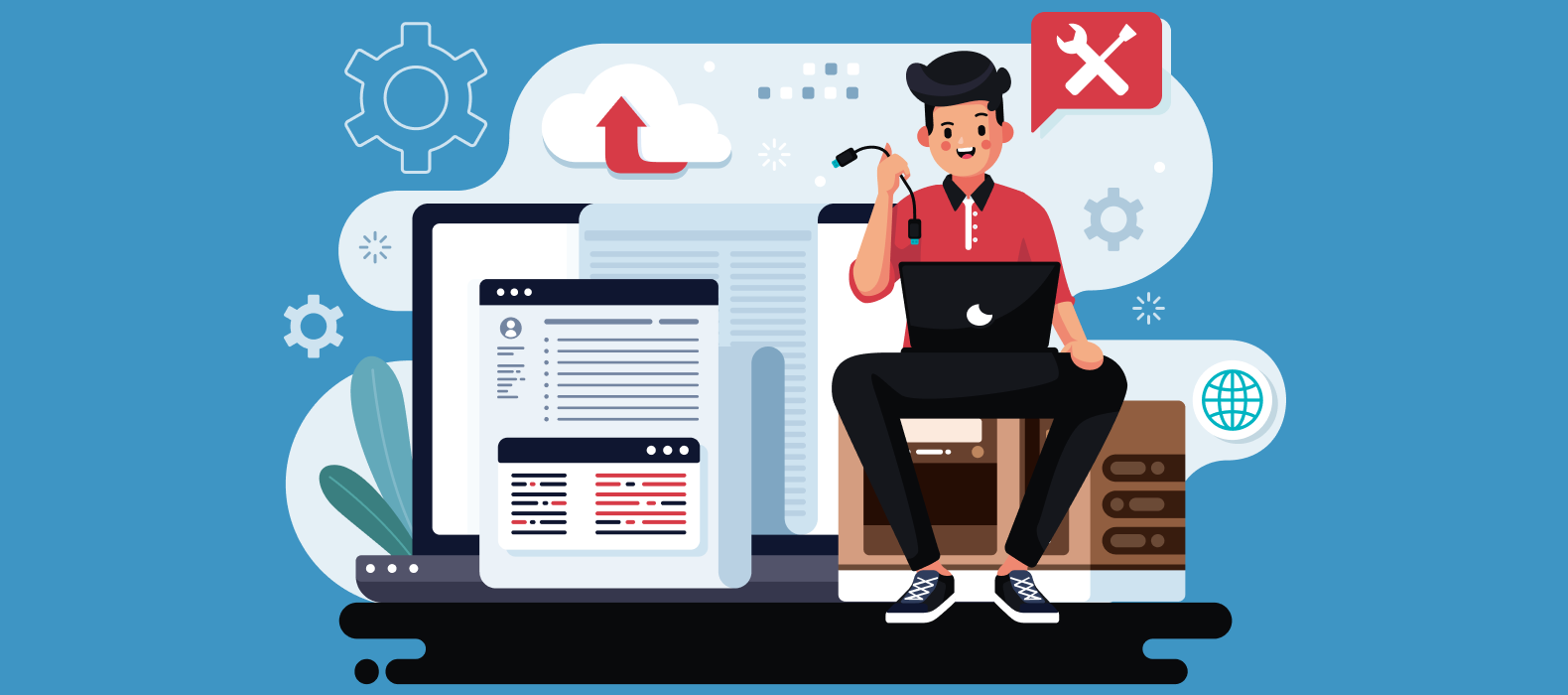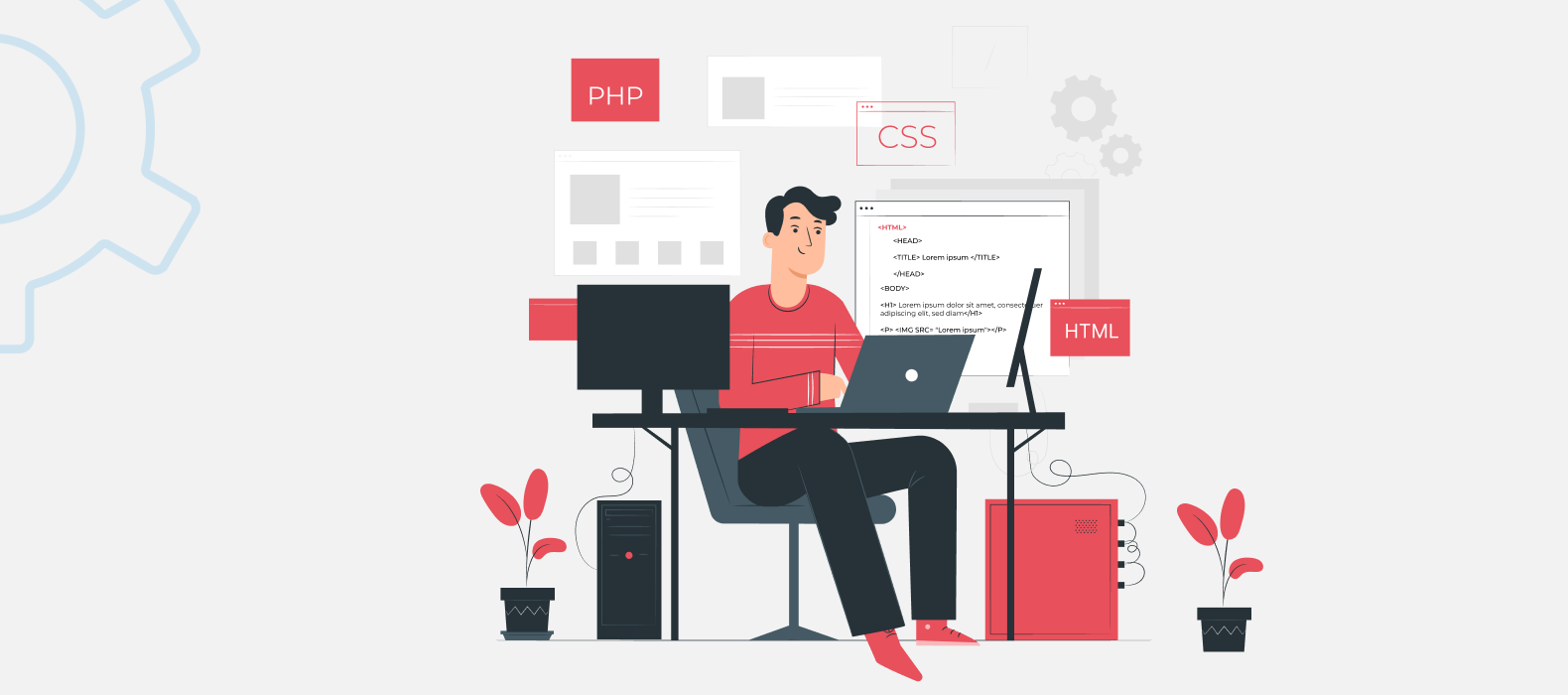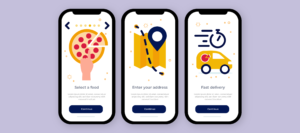Over the past few years, Laravel has steadily grown in popularity as a tool for creating original web apps in this quickly developing technological field. Since 2011, Laravel has gained popularity on a global scale. The Laravel framework is currently used by more than 1.3 million websites, including more than 284,000 websites hosted in the US.
With Laravel, you may have a completely gratifying creative experience due to the beautiful features covering all common use cases. Laravel is, without a doubt, the best PHP framework for creating reliable web applications. Let’s answer your questions about why use Laravel, its advantages, the Laravel framework, and exactly why use laravel for your development.
Let’s look at the blog and quickly learn everything about it.
What is Laravel?

Before understanding why use Laravel, one first understands what Laravel is. The definition of a “framework” is what Laravel provides. Model-view-controller (MVC) is an architectural pattern used to create online applications, and it was made available as an open-source framework in 2011. For example, a PHP framework for constructing cross-platform web applications is called Laravel. It is a server-based platform for managing data that divides the backend architecture of an application into logical parts using the Model-View-Controller (MVC) design pattern.
After the definition is completed, it must be properly understood. We must therefore comprehend what the PHP Framework is to proceed. It is a collection of code libraries with useful features, including authentication tools, rooting tools, and HTML templates, that enable users to create apps more quickly. The top PHP framework for why use Laravel quickens web development while raising the quality of the final product.
The codebases of Laravel web apps are organized and extremely scalable. Moreover, developers may swiftly increase the functionality of their apps due to Laravel’s modular packaging mechanism and robust dependency management.
Pros and Cons of Laravel

According to experts, one of the top PHP web frameworks is Laravel. Although developers frequently claim infinite benefits, there are still drawbacks to consider.
You should be aware of your needs and pick a web application development tool to suit them when making this decision. In this section, we describe Laravel’s pros and cons. Let’s begin with the pros:
1. PHP Assistance:
New features are continuously being developed in the PHP language that is not supported by more traditional programming tools. In Laravel, this is not the case. Instead, you can use new features offered by PHP, such as a new interface, overloading, a simpler array syntax, or namespaces, due to backward compatibility when using version 5.5 and newer.
2. Ease of Use:
While most programming languages enable you to create new applications quite quickly, Laravel is simple to learn due to its clear code structure and straightforward syntax.
Additionally, the documentation is sufficient, and you should be able to locate what you’re searching for.
3. Great Documentation:
The fact that Laravel is a developer-friendly framework is one of its biggest benefits. Laravel’s developers made sure everything in their work was clear and well-explained because developers designed it for developers. As a result, each Laravel variant includes detailed instructions for the classes, code style, methods, and changes that were done.
4. Database Migrations and ORM:
Since Laravel uses object-relational mapping (ORM), which supports the most common databases, as we said previously, it is excellent for database migrations.
The ORM that Laravel uses, called Eloquent, is great for more than just database migrations. It makes it simple to work with collections because you can quickly filter data using an English-like syntax that you have become used to.
These benefits are what persuade programmers to choose Laravel. But, to be thorough, let’s now discuss the drawbacks of this framework:
5. Excellent swings:
Compared to the rest of the content, not all framework components are flawlessly made or even adequate. For instance, dependency injection can become incredibly complicated. In addition, Laravel is not usually designed for beginners and necessitates continuous learning.
6. Upgrades that are too frequent and difficult:
One thing discovered is that there are a lot of updates, and some of these updates have problems, which may cause trouble for businesses why use Laravel.
7. Bittersweet Updates:
It affects PHP frameworks in general as well as Laravel specifically. An update may greatly improve the efficiency of your web application. Before switching to the next version, it is best to double-check all of your saves.
8. Weak Composer:
Unlike many other languages, Laravel’s composer is less robust than Ruby gems, npm (for node.js), pip (for Python), or other package managers.
Why use Laravel in your Next Development

There are many security measures provided by Laravel that you may use to reduce the application’s Laravel vulnerabilities. Laravel is a good choice among all the PHP frameworks because it integrates well with valid token forms and AJAX calls.
Due to its functionality, clarity, and simplicity, it maintains its Cachet as the greatest PHP framework. The ability to quickly construct apps is made possible by Laravel’s caching system, which keeps a large number of cached items.
Laravel enables businesses worldwide to customize web applications with perfect syntax and the best development techniques. As a result, it speeds up coding efficiency and cuts down on development time.
This brief Laravel tutorial will examine how Laravel explicitly helps programmers create solid web applications and dynamic websites. The main explanations for why use Laravel for the best PHP framework, along with its uses and advantages, are as follows:
1. Resolving Technical Vulnerabilities:
Every time there is a codebase, the security risk increases simultaneously. Even against serious security issues like cross-site request forgery, cross-site scripting, SQL injections, and others, Laravel protects a web application. Due to its very sophisticated codebase, the Laravel framework is significantly more advanced than other PHP frameworks in this regard.
2. Object-oriented libraries:
The Laravel framework not only enables MVC-style code organization. This framework also makes Laravel object-oriented because of its beautiful, expressive syntax. Along with supplementary tools for building strong web applications, working with this PHP framework gives developers access to 20+ pre-installed object-oriented and modular libraries. They enable programmers to create responsive and modular web applications using the latest PHP language ideas.
3. Scheduling tasks:
A task scheduling system is necessary for any online application to automate tasks. For example, web apps can run more quickly by emailing subscribers, notifying app users, or simply cleaning up the database. Before, a web developer would create a Cron entry if they wanted to schedule a task.
However, you can save yourself the hassle of using Laravel’s automatic command scheduler. It enables you to rapidly and expressively construct your command schedule within the Laravel framework and only needs one Cron entry on your server to run the operation. This function of the Laravel framework lets you save money on hosting while enhancing your online application’s speed and efficiency.
4. Effective database and ORM management:
When choosing a PHP framework, consider that the Laravel framework uses an ORM (Object Relational Mapping) named Eloquent. It’s an integrated implementation that is the best ORM for PHP frameworks.
First and foremost, Eloquent ORM makes it simpler to interface with app databases. It functions as a practical, fluid abstract interface for doing database queries. Many customers will appreciate how well the Laravel framework optimizes query execution and precisely specifies associations between various entities because database migration is one of its most well-liked features.
5. Setting up URL Routing:
Instead of redirecting to a link, URL routing implies showing a link’s contents on the current webpage. As a result, the Laravel user doesn’t have to wait for the page to load. In addition, Laravel features a built-in file configuration that is automatically loaded with the framework and neatly establishes accessible and recognizable routes to help with this.
6. Events and broadcasting:
You can construct an observer using Laravel events to make it easier for you to subscribe to any event in your application. User-friendliness is one of Laravel’s standout characteristics, which improves your application’s scalability as it expands.
The framework problem must be resolved to address the application’s domain challenge.
7. Packaging System:
The main way Laravel adds functionality is through packages. Packages can include useful tools for working with dates, like Carbon, or tools that link files to Eloquent models, like Spatie’s Laravel Media Library. There are numerous kinds of packages. Some packages can be used with any PHP framework because they are standalone. PHPUnit and Carbon are two examples of standalone packages.
You can use any of these packages with Laravel by requiring them in your composer.json file. On the other hand, some packages are made specifically to work with Laravel. For example, these packages might include configuration, routes, controllers, and views created to enhance a Laravel application. Creating packages specifically for Laravel is the main focus of this guide.
8. The message queue system:
In a typical synchronous workflow, a web server will execute a work order after receiving a request, execute the response, and then send the request back. However, the server must typically process requests in the background. Therefore, the user can immediately respond at that point. This is handled by Laravel’s built-in queue system, a straightforward API that enables you to execute tasks in the background.
9. Effective unit testing requires adequate support:
Fundamentally, Laravel has several features that make it possible to run unit tests using PHPUnit, a well-known unit-testing framework for PHP. The phpunit.xml file is automatically configured for unit testing, after which Laravel runs tests on the Feature and Unit directories. While the latter is appropriate for small portions of code, the former is appropriate for larger codebases with numerous objects. Laravel developers can explicitly evaluate particular web app features using PHP Unit testing. Furthermore, because Feature and Unit testing are natively supported by Laravel and can thus be continuously monitored, which is crucial for software quality control, developers no longer need to rely on third-party tools to carry them out effectively.
10. Support for MVC and an Object-Oriented Strategy:
When compared to other PHP frameworks, Laravel is much more popular because it follows best development practices, which is its first and most important benefit. The Model-View-Controller-based software design pattern is a great illustration.
First and foremost, the model-view-controller (MVC) architectural pattern ensures that logic (Model) and presentation (View) are separated from one another through the lens of the Controller, improving overall performance, documentation readability, and more.
Future of Laravel Development

This is a clear issue that might cross the minds of those considering investing money in Laravel. However, the world is changing quickly, so you don’t need to worry about technology that might soon become outdated.
The good news is that you won’t need to be concerned when Laravel eventually vanishes. On the contrary, it’s going to grow considerably more! Laravel has been among the frameworks with the highest expansion rate since its debut in 2011 when it was first made available. As a result, it has passed the test of time with flying colors.
We are severely underestimating its capabilities when we still refer to Laravel as a framework. But, heck. It has grown into a complete ecology. That has been the basis of its growth.
This demonstrates how Laravel has developed into a complete website development tool. It provides all the features and resources required to create an online store that sells goods to clients worldwide and, if you’d like, a website for your local business.
The fact that the Laravel framework has already been used to build more than 1.5 million websites gives credibility to this claim. As a result, we can confidently state that the future of Laravel development is bright.
Because Laravel is becoming more and more well-known worldwide, you may have wondered what Laravel’s near-term prospects are. Let’s explore!
1. Well-made apps:
As Laravel matures, the community has higher and higher standards for the framework. Laravel, on the other hand, rarely falls short of expectations because it is constantly expanding its library of pre-built apps. They significantly reduced the work required for Laravel development, saving you time and money.
2. Unit testing:
There is always the risk that issues could arise directly from changes made to a website’s user interface. To ensure that the most recent changes made by the developers do not cause a problem that interferes with the web application’s functionality, Laravel is intelligent enough to foresee potential failures and run tests. Using Laravel also makes it simple to test specific code snippets.
3. Enhances Your Website’s Performance:
The functionality of the website should be prioritized when creating a web app. This is so that the business may achieve its financial goals because the website’s performance is inextricably linked to the app’s flawless operation.
The faster payment speed offered by Laravel improves the efficiency of websites and the chase rate of web apps.
4. Strong security:
One of the framework’s most pronounced advantages is Laravel’s dedication to user security. It can protect your website from various hacker threats due to its numerous security features. Anyone nowadays would be foolish to overlook security concerns, given the rising number of cyberattacks. However, Laravel have you covered, so there is no need to worry.
Conclusion
In the end, Laravel is the best web development framework to use. It speeds up and improves the process of making engaging websites. Laravel will meet your needs whether you are a startup or a fully-fledged business.
Contact the top Laravel Development business as your remote development partner if you need help beginning the process. Our skilled Laravel developers at Pairroxz possess in-depth knowledge and vast experience. Hire Laravel developers from us to add knowledgeable and professional experts to your current team to produce top web solutions with the utmost precision. Get in touch with us immediately to gain immediate access to the greatest Laravel developers with various skill sets.
FAQ’s
Question 1: In 2023, which version of Laravel should be used?
The most dependable and well-supported version is Laravel 6. It will have new security patches by September 2022. You should carefully weigh your user authentication alternatives before choosing.
Question 2: What does Laravel’s Blade PHP mean?
The Blade is a straightforward but effective templating engine that comes with Laravel. The fact that Blade lets you edit raw PHP code in your templates is its best feature.
Question 3: Laravel: Does it Have a Future?
Yes, the laravel framework has a promising future in web development. Discover the reasons why Laravel will continue to be popular in the future by looking at the facts mentioned above.
Question 4: Do huge companies utilize Laravel?
Yes, many large businesses utilize Laravel, including the BBC, one of the oldest and most prestigious broadcasters
Question 5: Which databases work with Laravel?
Databases supported by Laravel include MySQL, Postgres, SQLite, and SQL Server.
Question 6: Why is Laravel more well-known than Symfony?
The popularity of Laravel is due to how straightforward the installation process is.




